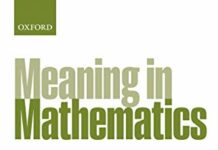
Ebook Info
- Published: 2002
- Number of pages: 132 pages
- Format: PDF
- File Size: 3.11 MB
- Authors: John Polkinghorne
Description
Quantum Theory is the most revolutionary discovery in physics since Newton. This book gives a lucid, exciting, and accessible account of the surprising and counterintuitive ideas that shape our understanding of the sub-atomic world. It does not disguise the problems of interpretation that still remain unsettled 75 years after the initial discoveries. The main text makes no use of equations, but there is a Mathematical Appendix for those desiring stronger fare.Uncertainty, probabilistic physics, complementarity, the problematic character of measurement, and decoherence are among the many topics discussed.ABOUT THE SERIES: The Very Short Introductions series from Oxford University Press contains hundreds of titles in almost every subject area. These pocket-sized books are the perfect way to get ahead in a new subject quickly. Our expert authors combine facts, analysis, perspective, new ideas, and enthusiasm to make interesting and challenging topics highly readable.
User’s Reviews
Reviews from Amazon users which were colected at the time this book was published on the website:
⭐This book, actually more of a long pamphlet, reads surprisingly well. In my case I started with the mathematical appendix, since I can’t really understand anything in physics without attaching it to at least a sprinkling of math. Once I could see how his terms were relative to the simplified version of the math he presented in the appendix everything kind of fell into place. There is just the slightest homeopathic amount of math to make the reader feel virtuous, but not enough to intoxicate them.Kudos to Polkinghorne for his brief introductory history at the beginning of the book. This paragraph is a tangent based on my reading of that section. Which has nothing to do with quantum theory except that you have to some understanding of classical mechanics and optics to understand where quantum mechanics starts. I’d developed a general interest in this subject after studying the theories behind the patterns I’d seen in a single half slit device, the Foucalt tester, used during the polishing of a telescope mirror. So if could compare the level of this book with books on that subject, the level is ‘junior hobbyist level’, not what you’d see in a college course but not junior high level either. (Junior high level is really hard to determine since I figured my first mirror in the eighth grade.) I’d suppose an equivalent level book on the subject of mirror testing would be David Habour’s introduction “Understanding Foucalt”.The reader interested in really looking at the subject should instead look at the Quantum Mechanics course offerings from the online MITOpenCourseWare site. Or they can buy this book when their family member asks for a brief explanation of what they learn in those courses.
⭐I love these “Short Introduction” books. They give you a brief overview of various interesting subjects. I would have to say that this is one of the more difficult ones to understand. John Polkinghorne is a very astute writer, and he does a brilliant job of summarizing this inextricably complex subject. I’ll let him describe the intended reader. “Although the full articulation of the theory requires the use of its natural language, mathematics, many of its basic concepts can be made accessible to the general reader who is prepared to take a little trouble in following through a tale of remarkable discovery.” Yes, I think most “general readers” will have a “little trouble” following the material. That said, what does he cover?He starts by covering some basic concepts such as the particle nature of light, spectra, and the nature of the atom. Chapter 2 is quite difficult to follow. You will be introduced to matrix, wave, and quantum mechanics; there is also information on the double slit experiment and superposition. But the section on probabilities, observables, Hilbert space, vectors, eigenvectors, and eigenvalues is a little deep. He continues to discuss the uncertainty principle, complementarity, and decoherence. When talking about decoherence, Polkinghorne elaborates on something called the “measurement problem,” which has to do with the collapse of the wave function where “the superposition principle holds together alternative, and eventually mutually exclusive, possibilities right until the last moment, when suddenly one of them alone surfaces as the realized actuality.” There are a number of theories about what exactly happens here and he devotes a few paragraphs to each. In the end, he notes that we still really do not understand what is going on.By chapter four, he is covering tunneling and statistics (as it relates to bosons and fermions). I found the coverage of the “delayed choice experiments,” the “sums over histories,” and further information on decoherence intriguing. It is here that we see some strange stuff going on in the quantum world.He sums up by concluding that “Quantum theory is certainly strange and surprising, but it is not so odd that according to it `anything goes.'” In this book we have a brief summary of quantum theory; just don’t expect it to be a breeze to read unless you have background in the field.
⭐Let me preface this with the fact that I am neither a physicist or a mathematician. I did have to take countless hours of statistics in my many years of college but that was no help in understanding this book.I really purchased this book as I understood it to be written for the layman to give him an overall understanding of what Quantum Mechantics is about, what makes it special, and what it has accomplished. Alas, after reading the book the above three questions are still unanswered. I may read it again as it is a tiny book but it is not the most enjoyable book to read (unlike Hawkins “A Brief History of Time” which was a great read). The author’s explanations seem very unclear and he never quite gets to the point! In the preface to his book the author makes two very bold statements that in effect says that Quantum theory is the greatest intellectual achievement of the 20th century and that Quantum Theory has been “fantastically fruitful” during it’s 75 years of “exploitation”. Oh, really, would you care to elaborate on that please? This sets the tone for the whole book. He makes a vague statement about this accomplishment or that accomplishment throughout the book then just drops it without ever giving you a concise, clear cut example. I felt like someone at a cake bake whom is repeatedly told how great everything tastes but is never allowed to taste it himself The author quotes a statement of Richard Feynman (a famous Quantum mechanics physicist) in which Richard says “I think I can safely say no one understands quantum mechanics.” Well I think he must be right because I believe that if the author truly understood quantum mechanics he could certainly convey it’s essence more clearly.P.S. If you feel compelled to buy this book do yourself a favor and read through the Glossary two or three times before you read the book.
⭐It was OK for the first twenty pages or so, but from then on it was a waste of time my reading it. Very dense and very poorly written. Some of the sentences were so badly written I found myself mentally rewriting them. I’m sure that I could edit the book and reduce the number of words in it by 50%.An example: “An electron does not all the time possess a definite position or a definite mometum, but rather it possesses the potentiality for exhibiting one of these if a measurement turns the potentiality into an actuality”. I think this means “We cannot measure the position and momentum of an electron simultaneoulsly at a given time point”. .
⭐I bought this book to remind myself of the basics of quantum mechanics, as a first year module at uni was a very long time ago now. The development of quantum theory is placed in its proper historical context and the rudiments of quantum theory are built up sensibly; the mathematics is relegated to an appendix and can be skipped over if you wish. So far so good.I have two main issues with this book. The first is that the author’s prose can be hard going as he seems to want to prove that his command of English matches his command of path integrals. The second is the mathematical appendix. Mathematics is the natural language of all things quantum and putting the climax of each section into an appendix feels disjointed. In this kind of book I believe that readers expect the occasional formula in the main text, even if only to skip over them.
⭐I always seem to love these books, as a Meng Software Engineering student I have a keen interest in alot of aspects of engineering, and when I begin a project starting something new I always look for one of these “A Very Short Introduction” books, ever since I first read “A Very Short Introduction To Cryptography”. I have a vast collection of these all from different authors they are perfectly pocket sized for taking anywhere so you can read them any chance you get, not too overwhelming yet give a very nice insight into the fundamentals or “foundations” of the subjects, I have yet to find one that disappoints.For computer scientists looking for a book after this one I would highly recommend Quantum Computing from Cambridge University.
⭐There is more meat in this book than most on this weird subject, and I apreciate the unconventional inclusion of the maths in the appendix. The history of the development of the theory, from an author who was actually involved in it and knew most of the peoiple involved, is really great.There is a detailed description of eigenvectors, but no explanation of its use in the theury! And the maths has to be done in Hilbert space! What’s that?!Nearly a great book.
⭐I learned quantum mechanics at university, for my first degree (in chemistry). This book is a beautiful exposition of the subject by a master in communication. BUT – you still have to develop a ‘way of thinking’ to get inside quantum mechanics. Despite Polkinghorne’s ability in describing things, I am not sure that this will ‘do it’.Even so, a first-class refresher for me (fifty years on)
Keywords
Free Download Quantum Theory: A Very Short Introduction (Very Short Introductions Book 69) 1st Edition in PDF format
Quantum Theory: A Very Short Introduction (Very Short Introductions Book 69) 1st Edition PDF Free Download
Download Quantum Theory: A Very Short Introduction (Very Short Introductions Book 69) 1st Edition 2002 PDF Free
Quantum Theory: A Very Short Introduction (Very Short Introductions Book 69) 1st Edition 2002 PDF Free Download
Download Quantum Theory: A Very Short Introduction (Very Short Introductions Book 69) 1st Edition PDF
Free Download Ebook Quantum Theory: A Very Short Introduction (Very Short Introductions Book 69) 1st Edition




